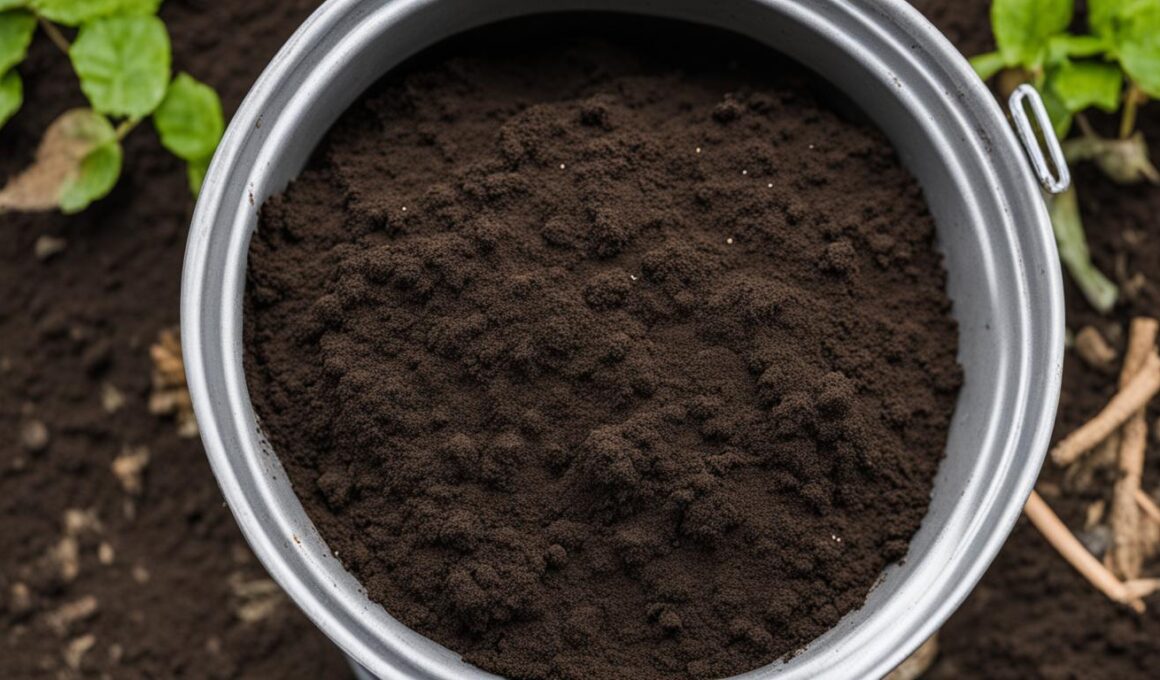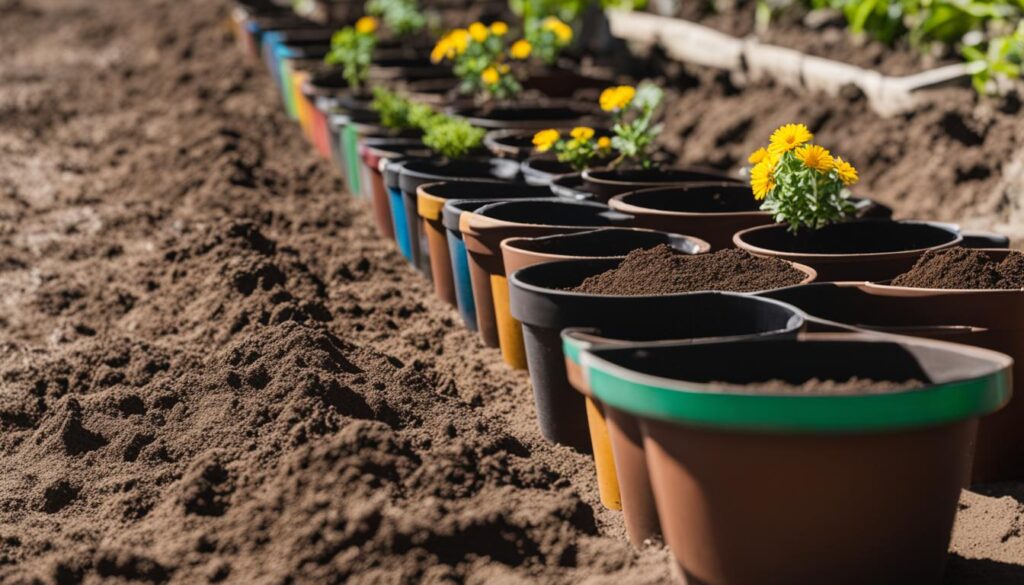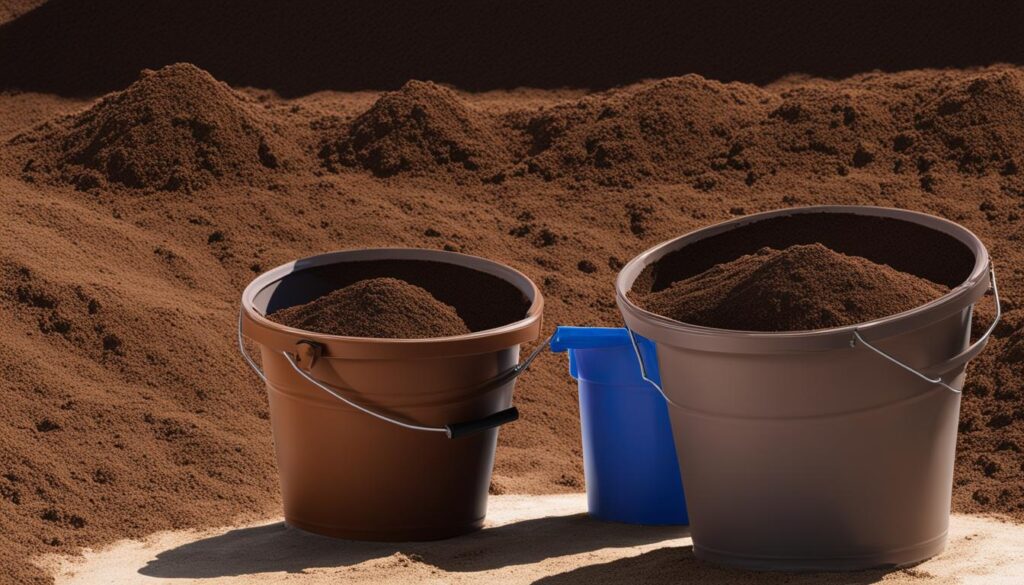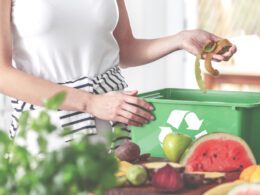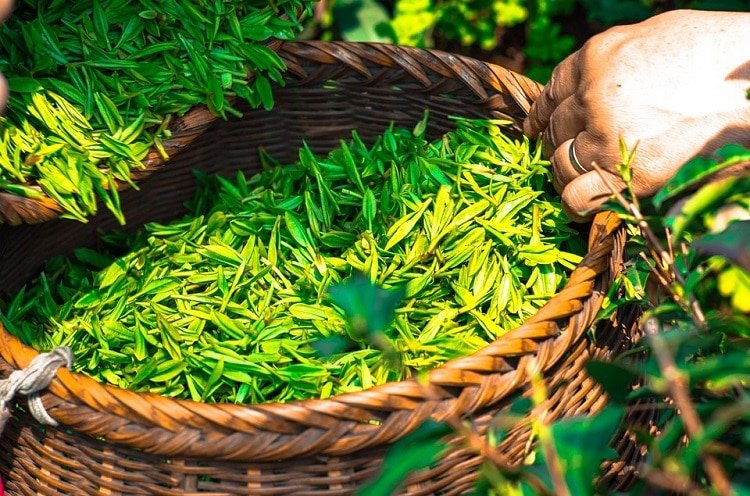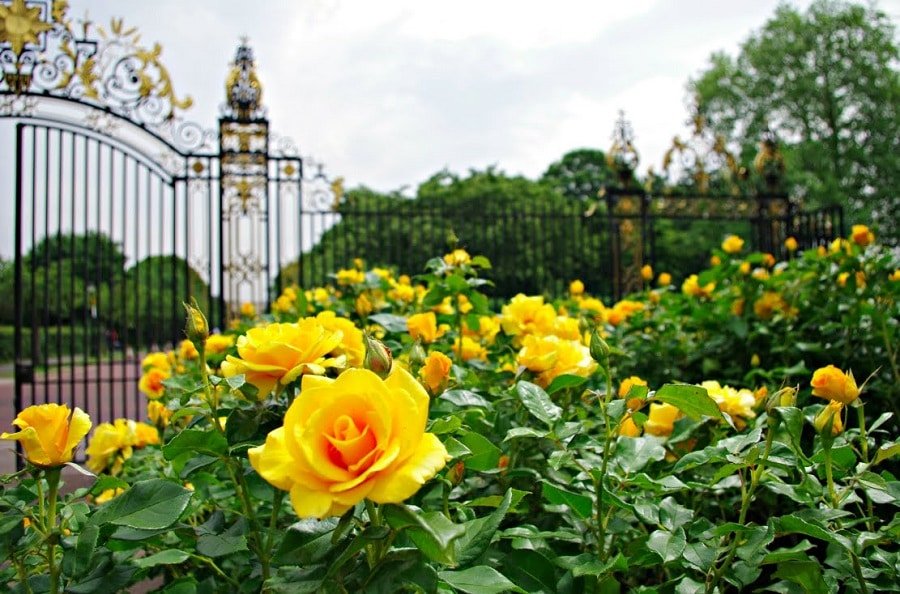When it comes to filling a 3-gallon bucket with soil, knowing the precise measurement is crucial for successful gardening. Whether you’re a seasoned gardener or just starting out, understanding the volume of soil needed can help ensure healthy growth and optimal conditions for your plants. So, let’s dive into the world of soil measurement and find out how much soil your 3-gallon bucket requires!
Key Takeaways:
- Accurate soil measurement is essential for successful gardening.
- Understanding the volume of soil needed ensures optimal conditions for plant growth.
- A 3-gallon bucket requires approximately 3.37 cubic feet or 0.451 cubic yards of soil.
- Consider factors like soil compression and existing soil when estimating the amount needed.
- Use tools like potting soil calculators to accurately determine the soil volume for flower pots.
Understanding Soil Volumes for Containers
When it comes to potting plants in containers, understanding the appropriate amount of soil needed is essential for healthy plant growth. Container sizes can vary, making it challenging to determine the exact volume of soil required. Whether you’re using a 3-gallon pot, a 5-gallon pot, or any other container size, knowing how to estimate soil volume accurately is crucial. In this section, we’ll explore how to gauge soil requirements for different container sizes and provide tips for achieving optimal results.
Container sizes are typically measured in inches and gallons in the United States, or centimeters and liters in the United Kingdom, Europe, and other countries. To estimate soil volume for a specific container size, it’s best to measure the top diameter of the pot and refer to a volume conversion chart. For instance, a 3-gallon pot is approximately equal to 3.37 cubic feet or 0.451 cubic yards of soil. However, it’s important to consider factors such as soil compression and potential transplanting when determining the amount of soil to purchase.
Soil compression occurs when soil is moistened or pressed into a pot, causing it to compact. To account for potential compression, it’s recommended to factor in additional dry soil when purchasing. Additionally, if you’re transplanting a plant from one container to another, the roots may already have soil around them, reducing the overall soil requirement. Therefore, it’s essential to consider both soil compression and the existing planting medium when estimating the amount of soil needed.
Determining Soil Volume for Container Sizes: A Handy Chart
The table above provides a comprehensive guide to soil volume requirements for common container sizes. It outlines the approximate volume of soil needed in cubic feet and cubic yards, as well as the number of pots per bag of soil and per yard. Using this chart, you can easily determine the appropriate amount of potting soil to purchase for different container sizes, ensuring your plants have ample space to grow and thrive.
Container Sizes and Soil Requirements
When it comes to choosing containers for your plants, clay pots and nursery pots are popular options. Different container sizes require varying amounts of potting soil to ensure healthy plant growth. Let’s take a closer look at the soil requirements for these containers.
Clay Pots
Clay pots are known for their natural beauty and ability to retain moisture. If you’re using a 3-gallon clay pot, you’ll need approximately 3.37 cubic feet of potting soil to fill it. This is equivalent to a 10-inch pot that requires 3 gallons or 11 liters of soil. Remember to factor in extra dry soil when purchasing, as soil compression and potential transplanting may necessitate additional soil.
Nursery Pots
Nursery pots are commonly used for starting and growing plants before transplantation. A 3-gallon nursery pot, which is equivalent to approximately 3.37 cubic feet of soil, falls into the range of a 10-inch pot that requires 3 gallons or 11 liters of soil. For a 5-gallon nursery pot, you’ll need 5.14 cubic feet of soil. These measurements can serve as a guideline for the amount of potting soil required for different container sizes.
Remember that these estimations may vary depending on factors like soil density, compaction, and the specific needs of your plants. It’s always a good idea to consult with gardening experts or refer to potting soil calculators for more precise measurements based on your specific containers and plants.
| Container Size | Equivalent Volume | Amount of Potting Soil Required |
|---|---|---|
| 3-Gallon Clay Pot | 10-inch Pot | Approximately 3.37 cubic feet (3 gallons) |
| 3-Gallon Nursery Pot | 10-inch Pot | Approximately 3.37 cubic feet (3 gallons) |
| 5-Gallon Nursery Pot | N/A | Approximately 5.14 cubic feet |
Potting Soil Calculations for Flower Pots
If you’re using flower pots and want to calculate the volume of soil needed, a potting soil calculator can be a helpful tool. By inputting the dimensions of your flower pot, including the top diameter, bottom base diameter, and height, the calculator can provide you with an accurate estimation of the amount of soil required. This can ensure that you purchase the right quantity of potting soil, preventing any wastage or shortage.
For example, let’s say you have a flower pot with a top diameter of 4 inches, a bottom base diameter of 3.2 inches, and a height of 2.75 inches. By entering these measurements into the potting soil calculator, you can determine the specific volume of soil needed to fill this particular pot.
Using a potting soil calculator takes the guesswork out of the equation and allows you to plan your gardening endeavors more effectively. It eliminates the risk of overfilling or underfilling your flower pots, ensuring that your plants have enough space for their roots to grow and thrive.
Example Potting Soil Calculator
| Top Diameter (in inches) | Bottom Base Diameter (in inches) | Height (in inches) | Volume of Soil Required (in cubic inches) |
|---|---|---|---|
| 4 | 3.2 | 2.75 | 35.21 |
In the example above, the potting soil calculator determines that you’ll need approximately 35.21 cubic inches of soil to fill a flower pot with a top diameter of 4 inches, a bottom base diameter of 3.2 inches, and a height of 2.75 inches.
By utilizing a potting soil calculator, you can save time, money, and effort in your gardening endeavors. It allows you to make informed decisions about soil quantities, ensuring that your plants have the right conditions to thrive. So, the next time you’re planning to fill your flower pots, don’t forget to use a potting soil calculator to determine the precise volume of soil needed.
Considerations for Soil Amounts
When estimating the amount of soil required for your container gardening, it’s important to take into account various factors that can affect soil volume. Two key considerations are soil compression and the existing planting medium. Understanding these factors will help you determine the accurate amount of soil needed for your pots and ensure optimal growing conditions for your plants.
Soil Compression
Soil compression refers to the reduction in volume that occurs when soil is compacted or squeezed. When you water your plants or press the soil into the pot, it can lead to soil compression. This means that the actual volume of soil needed to fill your pot may be slightly less than the calculated volume. To account for soil compression, it’s advisable to add a little extra dry soil when purchasing. This will help compensate for any reduction in volume and ensure that you have enough soil to fill your pots adequately.
Existing Planting Medium
If you are transplanting a plant from one container to another, it’s important to consider the existing planting medium. The roots of the plant may already have some soil around them, which will reduce the overall soil requirement. Take note of the soil clinging to the roots and adjust your soil volume accordingly. By accounting for the existing planting medium, you can avoid overfilling the pot with unnecessary soil and provide a healthy environment for your plant to thrive.
It’s important to note that the calculations provided are estimations, and variations in soil density and compaction can affect the actual amount needed. By factoring in soil compression and the existing planting medium, you can ensure that you have the right amount of soil to create optimal conditions for your plants and promote their healthy growth.
| Consideration | Impact |
|---|---|
| Soil Compression | Reduces actual volume needed |
| Existing Planting Medium | May already have some soil around the roots |
How Do I Determine the Right Amount of Soil for Different Sized Containers?
When determining the right amount of soil for different sized containers, it’s important to calculate the cubic feet of soil needed. For example, a 30-gallon container will require approximately 4 cubic feet of soil to ensure proper drainage and space for plant roots to grow.
Conclusion
When it comes to gardening, precise soil measurement is key to success. By understanding the volume conversions and using tools like potting soil calculators, you can accurately estimate the amount of soil required for any container size, including a 3 gallon bucket.
Remember to consider factors like soil compression and the existing soil when making your calculations. Soil compression can cause the soil to settle, so it’s important to account for potential changes in volume. Additionally, if you’re transplanting a plant, keep in mind that the roots may already have soil around them, which reduces the overall soil requirement.
With precise soil measurements, you can provide your plants with optimal conditions for healthy growth. By ensuring you have the right amount of soil, you’ll create a suitable environment for roots to spread and plants to thrive. Follow these gardening tips for precise soil measurement and enjoy the satisfaction of a beautiful and flourishing garden!
FAQ
How much soil does a 3 gallon bucket require?
A 3 gallon bucket typically requires approximately 3.37 cubic feet or 0.451 cubic yards of soil.
How can I estimate the amount of soil needed for different pot sizes?
To estimate soil volume, it’s best to measure the top diameter of the pot and refer to a volume conversion chart. Garden centers sell pots by size, either in inches and gallons or centimeters and liters.
What volume of soil is needed for a 10-inch pot?
A 10-inch pot, which is equivalent to a 3 gallon pot, requires approximately 3 gallons or 11 liters of soil.
How can I calculate the volume of soil needed for flower pots?
To calculate the volume of soil needed for flower pots, you can use a potting soil calculator. Enter the dimensions of the pot, including the top diameter, bottom base diameter, and height, to get an accurate estimate of the soil volume required.
What factors should I consider when estimating soil amounts?
Factors to consider include soil compression when moistened or pressed into the pot, and the existing planting medium. Roots may already have some soil around them when transplanting, which can reduce the overall soil requirement.
Are the calculations provided here accurate for all situations?
The calculations presented here are estimations, and variations in soil density and compaction can affect the actual amount of soil needed. It’s always advisable to factor in additional dry soil when making a purchase.





